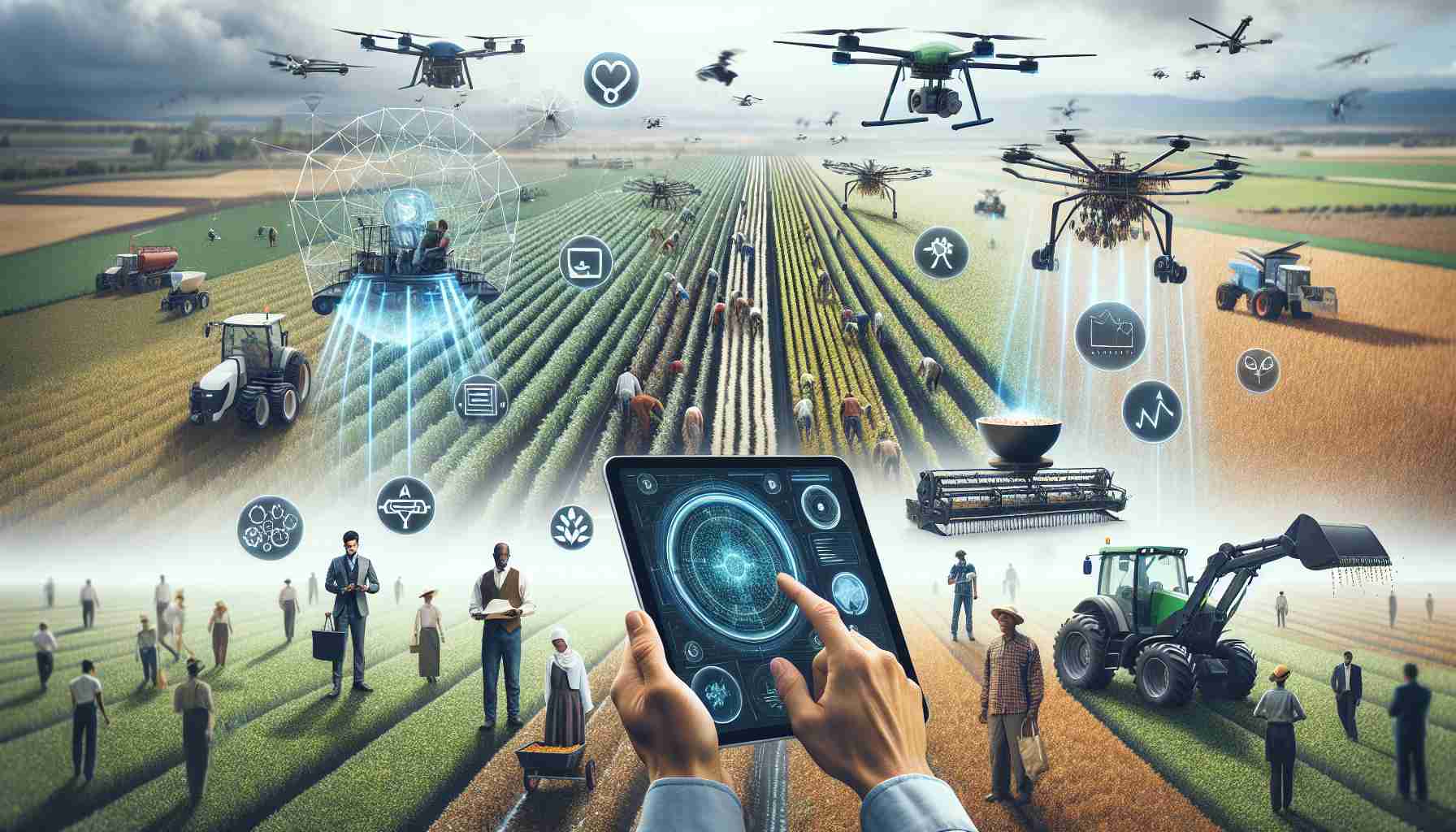The symbiosis between humans and the Earth has propelled our evolution, shaping landscapes, communities, and cultures through practices like farming. Historic cultivations, from wheat fields to olive groves and vineyards, carry the wisdom of time. However, the agricultural domain is now confronting modern challenges that demand innovation, such as food security, resource depletion, and climate change.
AI-enhanced Precision Farming: Revolutionizing the Agricultural Experience
AI-driven precision agriculture or Smart Agriculture leverages digital technologies and predictive analytics to streamline farming procedures. Instead of heavy reliance on chemicals, AI pinpoints intervention needs, thus boosting yield, cutting costs, and fostering sustainability. Democratizing access to this tech is vital irrespective of farm size, improving environmental stewardship and yield.
However, the success of this tech revolution necessitates political commitment and infrastructural enhancements, such as swift data transfer and European standards for rural wireless access, to ensure comprehensive AI tech adoption.
AI promises a myriad of benefits like heightened efficiency, reduced costs, environmental impact, and employment opportunities in automation. Still, addressing the risks, including reliance on tech providers, is crucial to uphold food sovereignty, preserving traditions, and reducing inequalities, ensuring farmers’ independence.
AI-Powered Crop Monitoring and Risk Mitigation
Advanced AI algorithms offer detailed mapping of soil properties, plant conditions, and climate, enabling a comprehensive, real-time field overview for actionable insights against diseases, pests, or environmental stress.
Predictive models based on data analysis can foretell adverse weather and pests, enabling farmers to take preemptive action, thereby minimizing damage and enhancing the sector’s resilience.
The Role of AI in Fine-tuning and Automating Farm Practices
AI precisely calculates the needed water, nutrients, and care for crops by evaluating field conditions and weather forecasts, allowing for targeted resource use and reduced waste.
Automation powered by AI, such as planting, harvesting, and treatment processes, improves operational efficiency, precision, and safety. Furthermore, AI plays a critical role in ensuring traceability and quality across the entire agricultural supply chain, from production to distribution, ensuring regulatory compliance and food safety, thereby earning consumer trust.
Challenges and Controversies in AI Adoption in Agriculture
While AI offers exciting possibilities for agriculture, its implementation is not without challenges. The foremost concerns revolve around data ownership, privacy, and security. As AI systems gather vast amounts of data, questions about who owns this data and how it is used arise. There is a risk that large corporations could dominate the agri-tech field, potentially squeezing out smaller farmers.
Another significant challenge is the digital divide. Access to the necessary infrastructure, like high-speed internet, is still limited in many rural areas, which can impede the adoption of AI technologies. Furthermore, there is a need for skill development. Farmers must acquire knowledge and training to use these technologies effectively, which can be a barrier to entry for some.
Ethical considerations also come into play with AI deciding aspects of crop management. The reliance on algorithmic decision-making raises questions about transparency and accountability. Moreover, job displacement due to automation remains a sensitive topic, as AI can perform tasks traditionally carried out by farmworkers.
Advantages of AI in Agriculture
AI-driven agriculture can increase productivity and resource efficiency, which is essential given the growing global population and climate change. Enhanced precision in farming reduces chemical use, minimizing the environmental impact and promoting sustainable farming practices. AI systems can optimize irrigation and fertilization, leading to water conservation and healthier soils.
There is also potential for increased profitability for farmers. By reducing waste and increasing yields, farmers can see greater returns on their investments.
Disadvantages of AI in Agriculture
However, the cost of implementing AI technology may be prohibitive for small-scale farmers, potentially widening the gap between large and small farm operators. There’s also the concern of reduced human labor, which could negatively impact rural economies.
Moreover, the reliance on AI may lead to loss of traditional knowledge and agriculture practices, as technology takes precedence over centuries-old farming wisdom. There’s also a risk that AI might not be calibrated correctly to local conditions or could malfunction, leading to agricultural mismanagement.
In conclusion, AI in agriculture represents a transformative shift with the potential to significantly benefit the sector. Nonetheless, it is important to address the accompanying challenges, including infrastructure development, education and training of farmers, ethical concerns, and ensuring equitable access to the technology.
For further information on the intersection of technology and farming, you may visit reputable websites like FAO (Food and Agriculture Organization) or USDA (United States Department of Agriculture) for resources and insights into the role of technology in agriculture and rural development. These organizations often provide up-to-date reports and analysis on emerging technologies in the agricultural sector.

